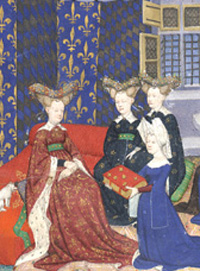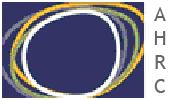 The project aims to find answers to the following questions.
The project aims to find answers to the following questions.
1) What place does Harley MS 4431, the collection of thirty works presented to Queen Isabel early in 1414, occupy in the textual tradition of Christine's works? What is its relationship to three earlier collections of her works, known to have been prepared under her direct supervision? The Duke of Berry's MS, containing twenty-six works by Christine, was acquired by the Duke in 1408-1409; it is now in five parts, Paris, BnF, f. fr. 835, 606, 836, 605 and 607. The Livre de Cristine, the name given by the author to her first published collection, is extant in two copies: Chantilly, Musée Condé 492-493, which dates from 1399-1405 and contains twenty-four works; Paris, BnF, f. fr. 12779, a collection of twenty works, dating from 1399-1403.
2) How do the products of Christine's scriptorium fit into the wider context of book production in Paris between 1399, when her publishing career apparently began, and 1418, when the Burgundians captured the city and Christine retired to a religious house? Those twenty years mark a high point in the history of the illustrated book in France. Royal and aristocratic patronage encouraged outstanding artists such as the Limbourg brothers, the Boucicaut Master, and the Masters of the Epistre Othea and the Cité des Dames; the last two are named after the works by Christine which they illustrated.
3) What conclusions can be drawn from a study of the language of Harley MS 4431, which has never been examined in detail? The manuscript provides an authentic and substantial corpus (over 380,000 words); the extensive vocabulary reflects the richly varied subject-matter. A concordance and dictionary of the Queen's MS, together with a linguistic study, will substantially increase our knowledge of Middle French which has received less scholarly attention than Old French or sixteenth-century French.
4) Can scribal hands be precisely identified? Eye and experience, the tools classically used by palaeographers, yield conclusions open to debate. It is hoped that work on the scribes of Harley MS 4431 will allow the development of objective tests for identifying hands.



